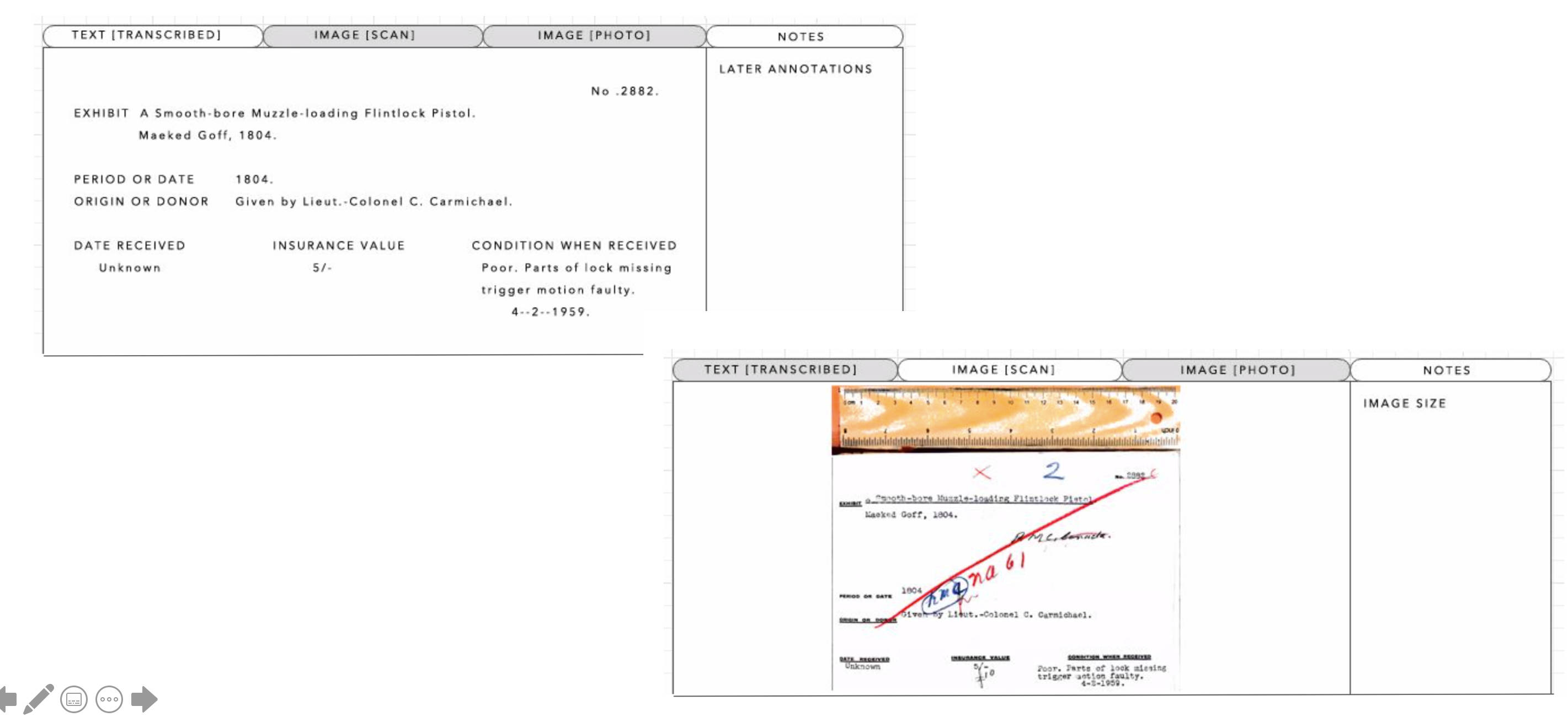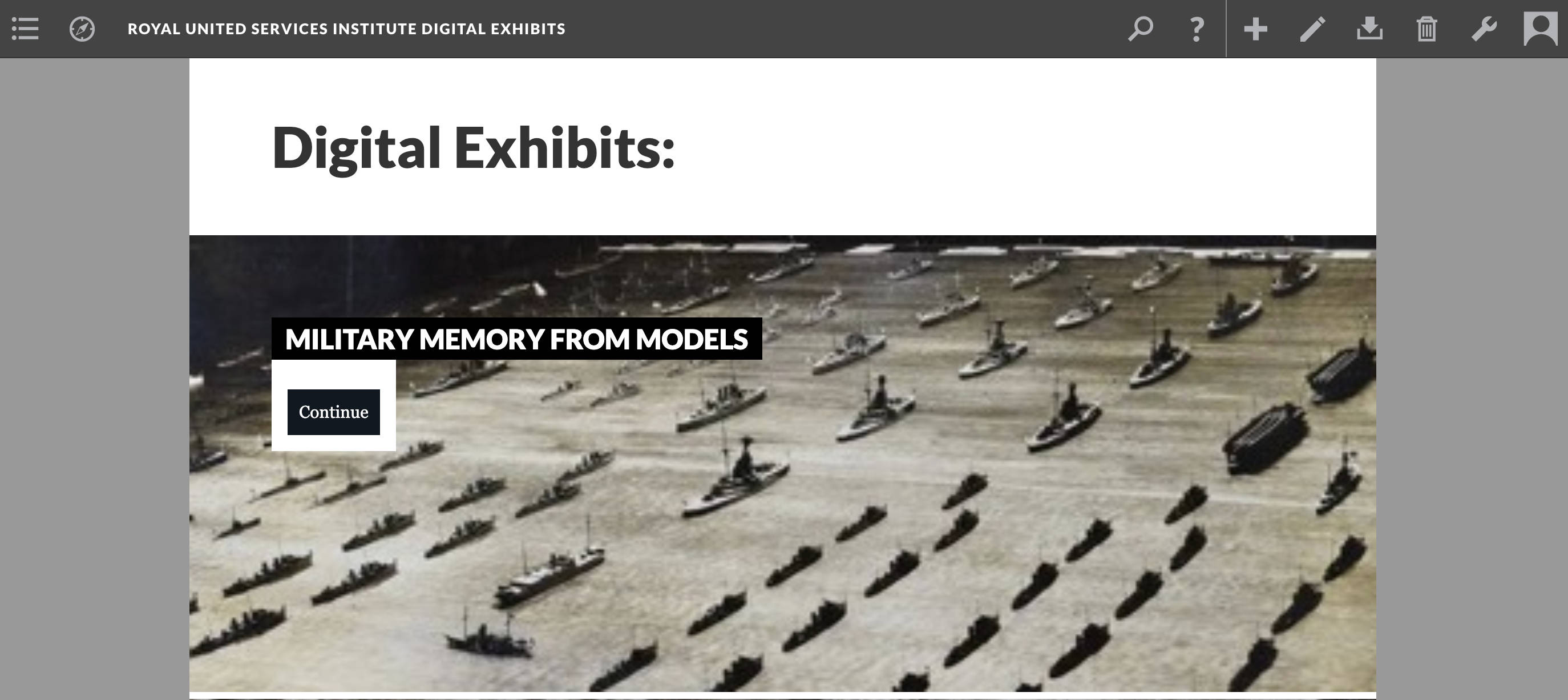At a 2017 conference at the Society of Antiquaries Jacqui Grainger, Librarian at the Royal United Services Institute (RUSI), casually mentioned that she was exploring digitisation options for RUSI museum catalogue records. That casual conversation has evolved into an ongoing collaboration about object-based learning. Initially, we intended to experiment with workflows for digitising records relating to RUSI’s ‘lost museum’ and since then we have branched out to create digital preservation strategies and digital exhibits.
Combining object-based learning with critical museum studies has resulted in a creative and ongoing use of RUSI’s rich history. From the outset, we strategised to design activities and highlight portions of the collection that would provide students with a challenging but achievable semester-long project. Working within the limitations of a 10-week semester, and with RUSI’s limited funds, we provided creative opportunities to introduce students to the many different challenges they might confront while working in the cultural heritage sector.
While developing projects that would engage students in a range of different digitisation and curation activities, we were also mindful of the theories and best-practice guidelines students would need to learn for any project-based skills to be transferable to other cultural heritage settings.
Jacqui and I agreed that starting small and scaling up would be the best way to develop sustainable projects that students could conceptualise, execute and evaluate and, most importantly, understand the value of their contributions to Jacqui’s long-term digitisation and digital museum goals.
During the 2017/2018 academic year we tasked 12 students enrolled in a digital archives module at King’s College London with digitising 15 records. Just digitising the records, nothing more. But, like any group of over achieving highly ambitious graduate students, they digitised, catalogued and created website wireframes for a digital archive:

I can’t say that we were surprised, but we were deeply impressed and decided to see what students might do with more detailed instructions and a more in-depth understanding of our project goals. In an effort to expand on this work, during the 2018/2019 academic year we designed activities that required students enrolled in a research data-management module to organise and add to content created by students from the earlier digital archives module. We framed the process as a practical opportunity to conceptualise how research data-management policies, typically developed for social science data, applied to humanities and digital humanities ‘data’. Students used the FAIR guiding principles (Findable, Accessible, Interoperable, Reusable) (1) and digital curation models (2) to develop research data-management policies and examples of how to implement these policies. Students’ work reflected a range of skills and interests and holistically enhanced existing digital materials from the RUSI archival collections.

Most recently, during the first half of the 2019/2020 academic year, students in a digital cultural heritage module used archival photos of the RUSI museum to create interactive digital exhibits. Jacqui and I discussed new strategies for working with larger class sizes, limited availability of RUSI resources and meeting long-term project goals.

Kristen Schuster is a lecturer in Digital Curation at King's College London. She completed her PhD at the at the University of Missouri in 2016 where she was involved in the Vestuta Monumenta Project to produce a digital version of the illustrated antiquarian papers of the Society of Antiquaries of London.
(1)The FAIR Guiding Principles are a set of guidelines for creating shareable digital content such as data sets. It is endorsed by major research infrastructures and grant funding bodies in the UK and the EU. For more information, visit: https://www.go-fair.org/fair-principles, accessed 16 April 2020.
(2) Digital curation models provide abstracted workflows for managing digital content. Different models present different steps, but generally the creation, maintenance and distribution of content are prioritised and associated with smaller tasks such as metadata creation and user engagement.
